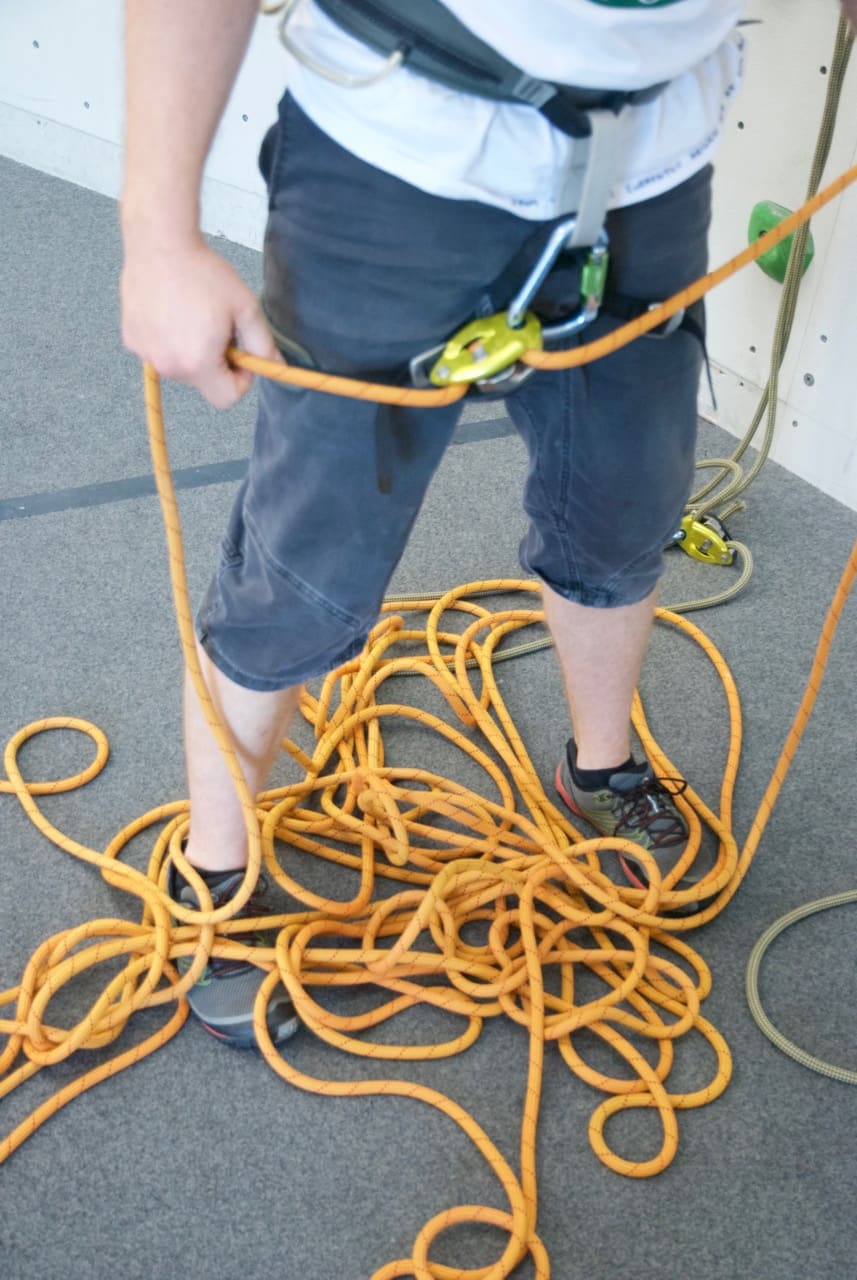As a staff member at FA, I have the privilege of administering belay checks and being a presence on the floor while members and visitors are climbing. I call this a privilege because I get to help ensure that climbers know how to use their climbing equipment properly and are climbing safely at First Ascent.
I’ve encountered several mistakes climbers make before they even get off the ground, so I thought I would share the 5 most common mistakes to watch out for before you begin your ascent:
Twisted Harness
Your harness is a major safety device that keeps your body safe whether you’re 10 feet off the ground or 1,000 feet off the ground. Making sure your harness is worn properly enables the gear to work the way it was designed to.

A twisted harness or a harness worn upside down (gear loops facing up instead of down) is one sign that your harness isn’t being worn properly. Twisted harnesses can add unnecessary wear at certain spots, cause discomfort, and ultimately present a safety issue since harnesses are designed to hold weight and handle impact when you fall.
Also making sure the rope is fed through the proper loop and all straps are double backed is just as important. Make sure you and your partner’s harness check out, and if you’re not sure feel free to ask a staff member check your harness too (unless you’re getting tested, because then they can’t help you.)
Unable to Tie a Figure 8 Knot from Scratch
If you’re the climber, the figure-8 knot is the gold standard when it comes to climbing knots, and you want to make sure your knot is properly tied. When walking around the gym, it’s easy to find several ropes that already have the knot started for you, but if you’re taking the belay test, you’ll need to know how to tie that knot from scratch, without assistance. If any point of this knot is not properly tied, your knot won’t be completely safe, and if you’re taking a belay test, you will definitely fail the test.

Rope is improperly fed through the harness
Harnesses generally come in two different styles when it comes to the belay loop. If you are the climber, you will need to make sure the rope is fed through the belay loop or the two hard points correctly, depending on the style of harness you’re using.

Most harnesses have two “hard points” that you feed the rope through to tie your knot, while others have one (like the FA rental harnesses). Make sure your rope is fed through the proper hard point(s) on the harness, usually the two points that the belay loop is attached to. If you’re not sure how to properly feed the rope through the harness you are using, don’t hesitate to ask a First Ascent staff member or experienced climber – it’s definitely worth the effort to make sure you are tying in safely.
Twisted Rope
Whether climbing on lead or top rope, checking your rope is very important. If you’re top roping, remember to look up before you climb. If the rope is twisted at the top of the route, untangling yourself and your belayer will help your climb immensely. If you’re a lead climber, make sure your rope isn’t tangled and the best way to do that is to flake the rope before you climb.

Even if you’ve moved climbs and you think your lead rope is OK, it’s always best to flake the rope just in case. It’s no fun when your lead partner is ready to clip, and you’re unable to feed enough rope because you’re fighting a tangled rope at the bottom.
Taking Your Brake Hand Off the Rope while Belaying
These days, modern technology is designed to add safety to your climbing adventures, so that should worst case scenarios happen, the gear has mechanisms that can potentially save your life. While most grigris have locking mechanisms (for the the mechanics of your belay device, go to this post), at the same time, worst case scenarios still call for proper technique.

If you’re the belayer, keeping your break hand on the rope at all times is absolutely crucial. No matter how safe you think the belay device is, it’s so important to keep that hand on the break side of the rope. To learn safe proper belay techniques, visit this recent post on belaying, or checking out a class can be a great resource too.
